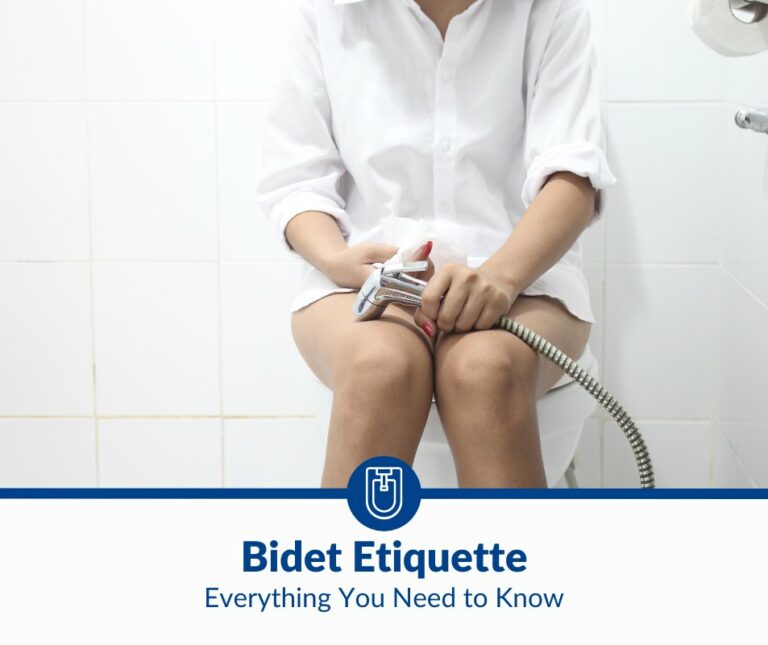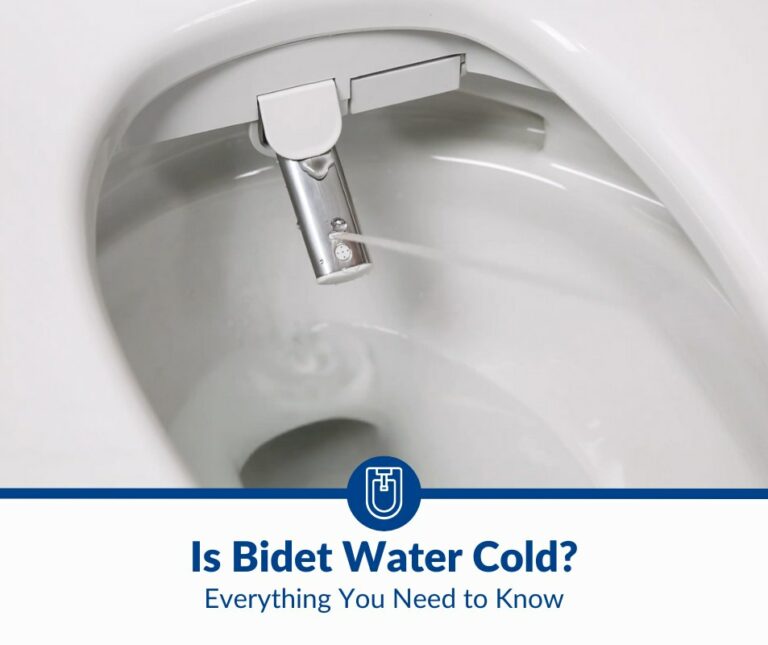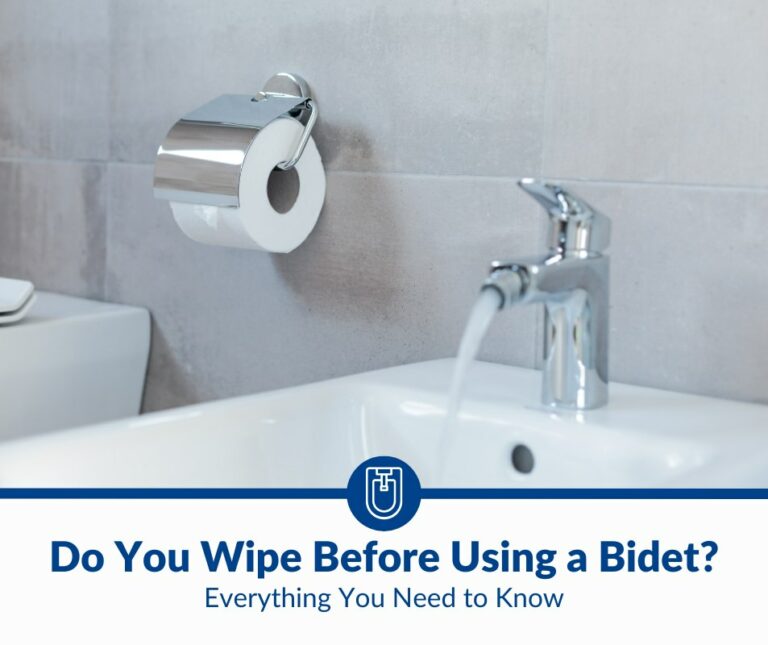How To Clean a Bidet Toilet Seat: The Complete Guide
Using a bidet can help you to feel cleaner by improving your overall hygiene, but this washbasin also needs to be cleaned regularly, lest it doesn’t function as expected. In addition to having a clogged nozzle, a dirty bidet also exposes you to infections, which defies the logic of using the fixture in the first place. With this in mind, how do you clean a bidet?
You can clean a bidet by using mild cleaning products, scrubbing hard-to-reach places with a soft toothbrush, and wiping the bidet with a damp cloth every day after use to keep it in good condition and free of germs.
In this article, I’ll explain the steps to follow when cleaning a bidet. I’ll also share tips on how to deep or light-clean a bidet nozzle. Let’s get started.
1. Avoid Using Harsh Cleaning Products On Your Bidet
One of the most important rules to observe when cleaning your bidet is abstaining from using harsh chemical products, such as bleach. Although you might think harsh products will give your bidet a sparkling clean, the truth is that they can damage it.
Chlorine-based products should be avoided because they increase the chances of your gaskets and rubber O-rings failing, as Consumer Reports states. This damage, more often than not, causes internal leaking.
Additionally, you’re highly likely to scratch and scuff your bidet’s ceramic surface when you scrub it with these products.
Even if you own a plastic bidet, you shouldn’t use harsh chemicals to clean it because they’re abrasive. Always steer clear of these detergents, as they’ll severely reduce your bidet’s lifespan.
Instead, you should go for an ammonia-free cleaner.
I’d recommend Windex Ammonia-Free Glass and Window Cleaner (available on Amazon.com). The cleaner is free of harsh chemicals and does a thorough job, leaving a streak-free shine on your bidet. I love that it comes in a convenient spray bottle that makes it easy to use.
You can also use vinegar (you probably have it in your kitchen or pantry) to clean your bidet. This will work well to clean and sanitize your bidet. But make sure you use white distilled vinegar as it contains 5% acetic acid, a compound that effectively dissolves debris and grime.
White distilled vinegar also has some disinfectant properties that allow it to remove some pathogens, as Healthline reports.
2. Wipe Your Bidet Down With a Cloth
Once you’ve prepared your cleaning solution, be sure to unplug your bidet before cleaning it (if it’s an electric one) . You want to stay safe since you’re going to be using water to clean it. Then, put a cloth under the tap and use this to wipe down surfaces in the bidet, such as its seat and crevices.
Even if you own a bidet that’s made out of germ-resistant plastic, it’s still important to wipe it down every day after use. Doing so will prevent the spread of bacteria while keeping your bidet in good working order.
After your initial wipe down of the bidet, take another damp cloth and soak it in a bowl of diluted dish detergent. Make sure you choose a dish detergent with a neutral pH, such as Dawn. You should aim to clean your bidet seat every day to prevent the build-up (and spread) of germs as well as unpleasant odors.
The spread of germs and odors can also occur with electric bidet units that have warm seats. When urine lands on the warm seat, it evaporates but leaves behind a residue that can lead to unpleasant odors, so you want to ensure you clean it away.
Other products or liquids could also end up on the bidet seat unintentionally, such as hairspray or bathroom air freshener sprays. This is why it’s always a good idea to wipe down the seat on a daily basis, or you could end up with the products sticking to the warm seat and forming stains.
3. Remove and Clean the Bidet Seat
Every few weeks, you should clean your bidet seat thoroughly. If your bidet comes with a button that allows you to remove it from the unit, you can press it to lift the seat. Pull the seat up with your hands and clean it with mild detergent.
But if your bidet doesn’t come with a removal button, you can gently pull the seat up and forward to dislodge it.
Note that some bidet units have buttons labeled “Quick Release.” These are usually located on the side of the bidet. After pressing the button, you should gently slide the seat forward so it comes off its mounting plate. This will enable you to give it a deep clean and remove built-up germs and dirt.
4. Clean the Bidet Control Panel
If you own a bidet that comes with its own control panel, you want to keep it clean by wiping it with a damp cloth that’s been sprayed with a mild cleaner, such as Windex. Never place the control panel in water or spray too much detergent on it, as these can damage it.
You should clean the control panel daily so that you keep it free of germs. An alternative to using a cloth to clean your bidet’s control panel and other components (such as a remote control if it comes with one) is to use antibacterial wipes. These are easy to use and will freshen up your bidet instantly.
I’d recommend using Simpleaf Flushable Wet Wipes (available on Amazon). They are free of alcohol and parabens, and you can flush these wipes down the toilet after use as they’re made of natural fibers, making them eco-friendly.
Get into the habit of keeping some near your bidet so you can always reach for one when required.
5. Remove the Bidet’s Deodorizing Filter
Some bidets have deodorizing filters installed to remove unpleasant odors from the bathroom. If your model has one, you should remove it and thoroughly clean it at least once a month. You can easily do this by cleaning it with an old toothbrush (clean) and water. Rinse it and then allow it to dry.
Some bidet units have carbon air deodorizers. These should be replaced when they no longer work well to remove unpleasant smells. Check your bidet’s user manual, as some units have carbon air deodorizers that need to be replaced every few years.
6. Use the Bidet’s Nozzle Cleaning Button
Some bidets come with nozzle-cleaning buttons or settings. About once a month, you should make use of these to give your bidet a good clean. Here’s how to clean a bidet nozzle:
- Press the button to extend the nozzle.
- Use a clean damp cloth to wipe the outside of the nozzle.
- Don’t use any harmful or chemical detergents on the nozzle.
- Avoid pressing or pulling the wand too much, as this could damage it.
On some models, you can use the button to get a spray of water and then scrub the nozzle clean with a soft toothbrush. Some units call this button the “rinse nozzle” or “cleanse nozzle” button. When you’re done cleaning the nozzle, make sure you press the button again so that the nozzle will return to its original position.
For bidet attachments, you might be able to carefully pull the nozzle out so that you can clean inside its hole. Use an old toothbrush dipped in water for this task, as it will help you to get into any hard-to-reach areas.
It’s worth knowing that there are different types of bidet nozzles depending on the bidet you’re using. Here are the main nozzles you can find on bidets and how to find them to give them a good clean.
- Dual nozzle bidets. These come with two wands that both have nozzles at the end. One wand and nozzle is for front washing, and the other one is for a rear wash. Make sure you clean both.
- 2-in-1 nozzle. This is one nozzle with two spouts: one spout performs the front wash, and the other one is for rear washing. The nozzle is found at the end of a wand, and you’ll easily notice the spouts because they are lined up vertically.
- 3-in-1 nozzle bidet. This nozzle has three spouts. One is for rear washing, the other is for front washing, and the third is a special one for washing, such as enema washing. Finding them is easy, though, as they’re also vertically aligned.
7. Give the Bidet Nozzle a Deeper Clean
Cleaning your bidet nozzle with a soft cloth can work for any light grime or dirt. But if the nozzle needs a deep cleaning, you should use a gentle cleanser, such as mild dish soap or ammonia-free Windex.
It’s good to deep clean your bidet nozzle every month or so. Whatever cleaning solution you choose, make sure that the detergent doesn’t have any ammonia in its ingredients. You can spray the detergent directly onto the nozzle and wipe it off with a damp cloth.
If you can’t remove the nozzle from the bidet and it needs a deeper cleaning, you should use vinegar. Fill a plastic bag with vinegar and attach it to the nozzle so it can soak in the solution.
After a few hours, remove the bag and then use a wet toothbrush to clean and scrub away any grime or hard-water deposits on the nozzle.
8. Clean the Bidet Strainer
Ideally, you should clean your bidet strainer at least twice a year. A bidet strainer is usually found on bidet seats within close proximity to the inlet and is an essential component of a bidet’s design because it protects it against mineral deposits from hard water.
Below is how to clean your bidet strainer.
- Turn off the water supply to your bidet.
- Remove the filter and rinse it with water.
9. Clean the Bidet Attachment Nozzles Daily
If you own a bidet attachment that gets connected to the back of your toilet seat, you should wash its nozzle every day because it doesn’t retreat into the unit, which means it’s more exposed to germs and bacteria.
Some bidet attachments have splash guards in front of their nozzles, which should also be wiped down whenever you clean your toilet. If you haven’t cleaned the bidet nozzles in a while and they’ve become clogged, you can use a toothpick to unclog them.
10. Clean Behind The Nozzles Of Your Bidet
Depending on the bidet that you have, you might have to loosen the bidet attachment so that you can reach the area between the toilet and the back of the nozzles. This will ensure that nothing can accumulate there, such as dirt or grime.
- Loosen the bolts that connect the seat to the attachment.
- Carefully slide the attachment so that it’s out of the way and you can clean the area.
- Remove Bidet Stains With Vinegar
If the bidet has stains, you can dip a wad of toilet paper in vinegar to remove them. You might have to let the wads stick to the area so that they can be left overnight. This will help to remove notorious stains.
Hard water stains can also mar the appearance of your bidet, so you should remove them with the use of vinegar and baking soda, as Better Homes & Gardens reports. Here are the steps to follow.
- Soak a cloth in vinegar.
- Wipe the surface of the stain with the cloth.
- Let the vinegar soak into the ceramic for a few minutes.
- Wipe the area again.
- Sprinkle baking soda on the ceramic. You’ll notice that it fizzes when it makes contact with the vinegar.
- Gently scrub the ceramic with a sponge that’s wet with water.
- Rinse the area with water so that you remove the baking soda and vinegar.
- Dry the ceramic with a soft cloth.
Baking soda works well to provide some scrubbing power for stains and grime while not being too abrasive for use on a variety of surfaces. It’s also great at neutralizing odors, as it contains a hydrogen ion that binds with acidic and alkaline odors so that they can be neutralized, as Orlando Sentinel reports. This chemical reaction actually changes the odors so that they’re innocuous salts and gasses, therefore removing bad smells.
11. Run the Bidet Twice After Cleaning It
Once you’ve finished cleaning your bidet, it’s worth running it once or twice so that you remove any cleaning product residue that might be in the system. This is important as it will ensure all cleaning product ingredients are flushed out, especially when deep cleaning your bidet.
12. Clean Your Handheld Bidet
A hand-held bidet is a nozzle that remains attached to the toilet. It’s convenient to use because you can easily direct the water to where you want to clean yourself after using the toilet. But you need to ensure you give it a good clean once in a while. To clean it, here are the steps to follow.
- Get an old toothbrush or soft brush.
- Mix together some vinegar and baking soda.
- Place the cleaning solution in a plastic bag so you can soak the bidet for about 10 minutes.
- Use your toothbrush or soft brush to gently remove dirt from the sprayer’s nozzle.
Clean the hand-held bidet body, as this can contain a lot of bacteria because it comes into contact with hands throughout the day. You can clean it by spraying a solution of equal parts distilled white vinegar and water.
If looking for a soft brush to clean your hand-held bidet, I would recommend the four-piece Multipurpose Cleaning Brush Set (available on Amazon). It contains a bendable cleaning brush that allows you to clean the curves of a bidet with greater ease. It also contains a 90° angle cleaning brush that makes it versatile for hard-to-reach areas.
13. Consider Installing a Bidet Seat Water Filter
While you should continue to clean your bidet regularly, as per the instructions in this article, it’s a good idea to think about ways to reduce how dirty your bidet gets, particularly when it comes to its seat. This is where a bidet seat water filter can come in handy!
These filters move sand, rust, and small particles of debris away from the water supply before they can get to the seat of your bidet. They can also help decrease hard-water deposits so that they don’t accumulate inside the seat, but you have to ensure the seat water filter you purchase is compatible with the type of bidet you have.
Final Thoughts
If you own a bidet, you should clean it regularly to ensure it remains clean and safe for use. Cleaning a bidet is easy, especially if you do some basic cleaning daily, as this makes it easier to maintain and keep in good condition.
Here are quick tips to keep in mind when looking to clean your bidet.
- Use a damp cloth that’s dipped in a gentle cleaning solution.
- Scrub the bidet’s nozzles.
- Clean the bidet’s seat with mild detergent.
- Clean and/or replace filters.
- Instal a bidet seat filter to prevent dirt and hard-water deposits.







